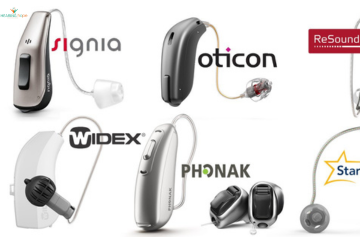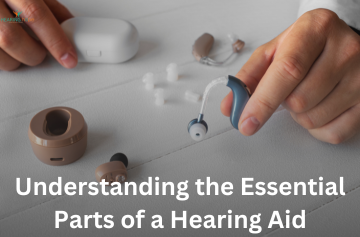Top 10 Hearing Aid Brands in India: Your Guide to the Best Choices
Top 10 Hearing Aid Brands in India 2025: Your Guide to the Best Choice Hearing loss affects millions of people throughout India, making it a widespread concern. Thankfully, modern technological innovations have led to the creation of advanced hearing aids that can greatly improve the quality of life for those with hearing difficulties. In this article, we explore the top 10 hearing aid brands in India, offering detailed insights into each brand and what they provide. Whether you’re looking for a hearing aid for yourself or a loved one, this guide aims to help you make a well-informed choice. 1. Signia Signia remains a leader in the hearing aid industry, known for its focus on comfort and discreet design. The brand offers stylish, nearly invisible hearing aids that emphasize both user comfort and visual appeal. Signia devices integrate effortlessly into daily life, enhancing hearing while boosting users’ confidence. With its dedication to creating subtle yet highly effective hearing solutions, Signia has become a top choice for those who value performance along with a discreet appearance. 2. Phonak Phonak is widely recognized as a pioneer in hearing aid innovation. Known around the world, the brand has built its reputation on cutting-edge technology designed to meet a wide range of hearing needs. What truly sets Phonak apart is its dedication to creating user-friendly devices that are both reliable and easy to use. As a result, Phonak has become a go-to choice for individuals looking for dependable and accessible hearing solutions. With a versatile lineup of products, Phonak ensures that people with varying degrees of hearing loss can find a personalized and effective aid to enhance their hearing experience. 3. Oticon Oticon stands out for its innovative BrainHearing technology, which mimics the brain’s natural way of processing sound. This advanced feature helps reduce the effort required to listen, providing a more natural and comfortable hearing experience. Designed with both simplicity and comfort in mind, Oticon hearing aids are ideal for individuals who want cutting-edge technology that fits effortlessly into their everyday routines. 4. Widex Widex has established itself as a standout brand, celebrated for its outstanding sound quality. Known for delivering clear and natural audio, Widex hearing aids offer an experience that closely mimics natural hearing. What truly distinguishes Widex is its strong emphasis on research and innovation. This focus enables the brand to consistently develop high-performance devices that not only enhance hearing but also enrich the user’s overall lifestyle. For individuals who value crystal-clear sound and audio precision, Widex remains a trusted and preferred choice. 5. Starkey Starkey Hearing Aids shine not only for their technological innovation but also for their strong humanitarian values. The brand’s global efforts to provide hearing aids to those in need highlight its mission to create meaningful change. Starkey’s devices are durable and packed with advanced features like noise reduction and speech enhancement, ensuring clear performance even in difficult listening environments. Their dedication to enhancing lives through hearing solutions has earned them a reputation as both a socially conscious and technologically forward-thinking brand. 6. ReSound ReSound leads the way in connectivity, merging advanced hearing aid technology with modern digital devices. Its hearing aids effortlessly sync with smartphones and other electronics, allowing users to stream calls and music directly to their ears. This smooth integration caters to tech-savvy users looking for an enhanced and connected hearing experience. ReSound’s focus on innovative connectivity has redefined how people interact with their hearing aids, making it an excellent choice for those who prioritize convenience and cutting-edge technology. 7. Unitron Unitron stands out for its commitment to personalized hearing solutions, recognizing that every individual has unique hearing needs. With a variety of customizable options, Unitron ensures that users receive devices specifically suited to their requirements. The brand’s focus on customer satisfaction is reflected in its meticulous approach and dedication to tailored care. Unitron has carved out a niche in the market, attracting those who appreciate a customized and user-centric hearing experience. 8. Bernafon Bernafon strikes the perfect balance between innovation and affordability, bringing high-quality hearing aids within reach for a broader audience. Known for their intuitive and user-friendly features, Bernafon devices make it easy for users to adjust and benefit from their hearing aids. With a strong commitment to delivering reliable performance at competitive prices, Bernafon has earned a reputation as a trusted brand for those seeking value without sacrificing quality. 9. Siemens Siemens has a long-standing reputation for delivering dependable hearing aids backed by years of expertise. Renowned for their durability and effectiveness, Siemens devices are designed to address a wide range of hearing needs. With a versatile selection of models suited to various lifestyles and preferences, Siemens ensures that users can find a solution that fits both their comfort and hearing requirements. This strong legacy of reliability has made Siemens a trusted name in the hearing aid industry. 10. Beltone Beltone, with a legacy that spans back to 1940, has built a strong reputation for its focus on personalized care. The brand takes great pride in customizing its hearing aids to meet the unique needs of each user, ensuring a solution that fits their lifestyle and preferences perfectly. Beltone’s dedication to providing tailored hearing solutions has made it a trusted option for those who prioritize individualized attention and a hearing experience that’s customized to their needs. Best Hearing Aid Manufacturers in India Listening devices in the country are angled towards more advanced technology being integrated into them as so many individuals are now using these devices. In case you want to know where to get the best Hearing Aid in India, here are some of the best-known companies whose products can give you hearing solutions. Manufacturer Brands Key Innovation Customer Support Focus WS Audiology Widex, Signia (Siemens) AI Sound Processing Comprehensive care and repair services Demant Group Oticon, Bernafon BrainHearing™ Technology Focus on customization and user care GN Group ReSound M&RIE Technology Emphasis on personalization and control Starkey Starkey Livio AI Health Tracking Features Advanced tech support for health










